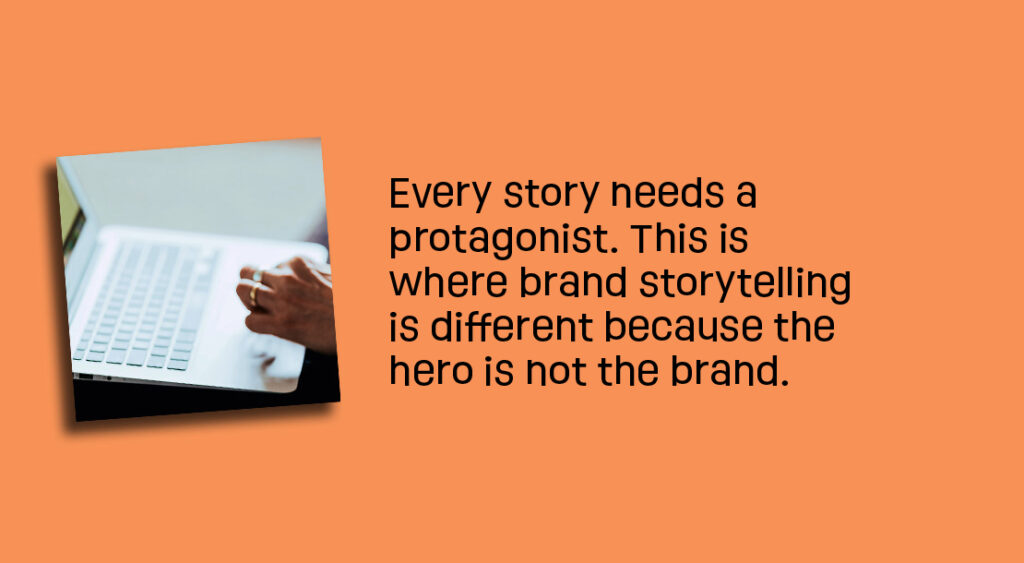Brand storytelling opens a direct channel between your brand and your audience. But what does brand storytelling mean in practical terms and how do you make it work for your business?
We all tell stories. Frequently, we do so without realising it because storytelling is so integral to how we communicate. Even the most typical, day-to-day events can become part of a narrative to help us interact with others.
Similarly, you can use storytelling to connect with your prospects and customers.
Brand storytelling makes your brand relatable to your audience and helps you build a stronger connection with them.

Brand storytelling helps you shape and influence your audience’s perception of your brand.
It’s the opportunity to build a cohesive narrative that brings together all the elements that make up your brand.
It enables you to create consistent content to reinforce your core brand messages.
The story of your brand is a genuinely unique selling point, providing you tell it well, with force and conviction.
The same storytelling fundamentals apply whether you’re promoting your brand or sitting around a campfire:
Plot
What happens during your story? The plot determines this. Without a compelling plot, you’ve got nothing to retain your audience’s attention.
The fundamentals are a beginning, middle and end. These may appear simple, but you mustn’t underestimate their importance for delivering a satisfying story.
How many films have you seen where the ending lets the whole thing down, or where key plot developments fail to make sense?
Your plot needs to be watertight because it underpins the entire narrative.
Setting
Where and when does your story take place? The setting is crucial for giving the audience context.
Without this essential element, your plot lacks the basic background that makes it immediate and real for the audience.
Characters
Every story needs a protagonist. Who will be the hero of your story? This is where brand storytelling differs from other storytelling because the hero is not the brand.
The hero of your story holds a mirror up to your audience. They see themselves in this role because the story taps into their feelings and puts them at its very centre.
There may be supporting characters too, but the hero’s experience should drive the narrative.
Conflict
In constructing a narrative, you need some form of obstacle that the hero must overcome.
Why should your story include conflict? Conflict creates dramatic tension. It taps into your audience’s emotions and makes your protagonist’s experience more relatable and resonant.
The causes of conflict will vary depending on your industry, audience and marketing goals.
Resolution
Basically, how using your brand solves the protagonist’s problem.
Remember: even with your brand riding to the rescue, it isn’t the story’s hero. Keep your focus on your audience.
There are different ways to approach brand storytelling and incorporate it into your content marketing.
Origin story
Explain how you started your brand, including what motivated you, what problems you wanted to solve and the obstacles and challenges you had to overcome.
Brand values
Illustrate putting your brand values into practice, showing how these values benefit your customers.
Data-driven
Use your customers’ feedback about their experiences with your brand as storytelling material.
Thought leadership
Apply your specialist knowledge and industry expertise to stories with a clear customer focus to build your brand’s authority and credibility
Brand storytelling builds customer loyalty. It makes your brand relatable to your audience.
By creating deeper connections, you can grow a community around your brand to strengthen and nurture it.
This way, you transform your audience from prospects and customers into powerful advocates for your brand.
Uncover your USP and hone your brand messages through powerful brand storytelling.
